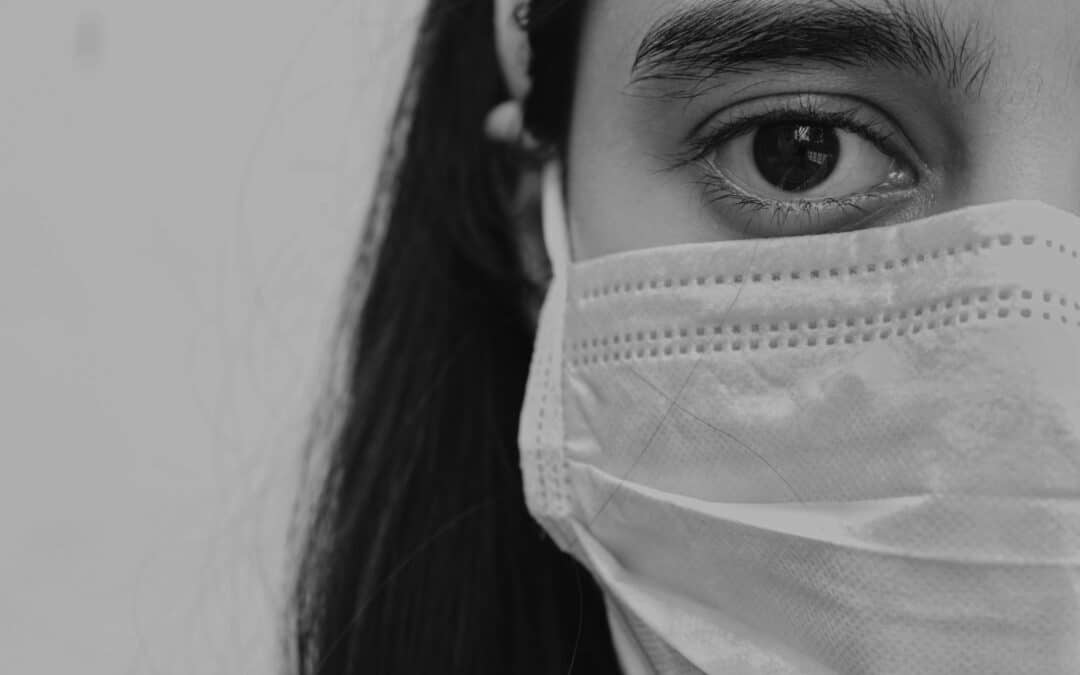Lyme disease is the most common vector-borne disease, the most prevalent tick-borne disease, and one of the fastest-growing infectious diseases in the United States.1 There are many different factors that are contributing to this growing epidemic. Gestational Lyme disease (transferred infection from mother to baby in pregnancy) is a crucial component adding to the rise in numbers of this disease that are affecting people worldwide and often resulting in a serious debilitating illness. Over the past 35 years (1985-2020) evidence of transplacental transmission and congenital infection of Borrelia burgdorferi have been clearly reported. However, the longer this takes to get the recognition that it deserves will directly prolong the cataclysmic effects on pregnant women and their children. In the US, the Tick-Borne Disease Working Group submitted a 2018 report to Congress in which they acknowledged transplacental transmission of Lyme from mother to fetus.2 Furthermore, in March 2020 the committee agreed upon a recommendation to Congress for further research into this alternate mode of transmission: “Further evaluation of non-tick bite transmission of Lyme disease, for example maternal-fetal transmission.”2 The National Institute of Health also published the statement: “If you are pregnant, be especially careful to avoid ticks in Lyme disease areas because you can pass on the infection to your unborn child.”
The current edition of a highly acclaimed, authoritative reference medical textbook, Remington and Klein’s Infectious Diseases of the Fetus and Newborn Infant, includes Lyme disease in their list of in-utero/congenital infections. They suggest that the well-known acronym TORCH (Toxoplasmosis, Other (T. pallidum, Varicella Zoster Virus, Parvovirus), Rubella virus, Cytomegalovirus and Herpes Simplex) is too limiting, and thus expanded to TORCHES-CLAP, with the L indicating Lyme disease.4 The Update on TORCH Infections in the newborn infant explains, “The usual way in which a fetus is infected is by transplacental spread after maternal infection in which the organism circulates in the mother’s blood. These infections, acquired in utero, can be severe enough to cause fetal loss or can result in intrauterine growth restriction, prematurity, or chronic postnatal infection.”5 It also states that “Clinical evidence of infection may be seen at birth, soon afterward, or not until years later.”5 By acknowledging that Lyme disease is not only a zoonotic disease but can also be transferred from mother to baby requires us to reevaluate what this means moving forward with this disease.
The CDC recently updated their website as well, stating:
If you are pregnant and suspect you have contracted Lyme disease, contact your physician immediately. Untreated Lyme disease during pregnancy can lead to infection of the placenta. Spread from mother to fetus is possible but rare. Fortunately, with appropriate antibiotic treatment, there is no increased risk of adverse birth outcomes. There are no published studies assessing developmental outcomes of children whose mothers acquired Lyme disease during pregnancy.5 Under recommendations for Lyme Disease and Breast Feeding, the CDC states, “There are no reports of Lyme disease transmission through breast milk.”6
Published Studies
The stealthy nature of gestational Lyme disease can manifest a complicated diagnosis, due to the delay or changing nature of symptoms, multisystemic effect on the body, and the unreliability of standard diagnostic tests. Syphilis, just like Lyme disease, is also caused by spirochetes. Therefore, it has often been thought that the disease developments have similarities when it comes to gestational transmission. Dr. Alan MacDonald, pathologist, published a comprehensive case series on gestational Lyme, including his findings from fetal autopsies. He states:
It is documented that transplacental transmission of the spirochete from mother to fetus is possible. Further research is necessary to investigate possible teratogenic effects that might occur if the spirochete reaches the fetus during the period of organogenesis. Autopsy and clinical studies have associated gestational Lyme borreliosis with various medical problems including fetal death, hydrocephalus, cardiovascular anomalies, neonatal respiratory distress, hyperbilirubinemia, intrauterine growth retardation, cortical, blindness, sudden infant death syndrome, and maternal toxemia of pregnancy. It is my expectation that the spectrum of gestational Lyme borreliosis will expand into many of the clinical domains of prenatal syphilis.7
Dr. Tessa Gardner, a pediatric infectious disease physician, authored a comprehensive chapter on Lyme disease in the 4th and 5th editions of Remington and Klein’s Infectious Diseases of the Fetus and Newborn Infant. Through her research, she discovered: …a total of 46 cases of adverse outcomes of these 161 cases of gestational Lyme borreliosis were found, including miscarriage, stillbirth, perinatal death, congenital anomalies, systemic illness, early onset fulminant or mild sepsis and later-onset chronic progressive infection….Thirty-seven percent of the total number of adverse outcomes were miscarriages or fetal deaths, 11 percent were neonatal deaths and 48 percent were either fetal or neonatal deaths. The effect of antibiotic therapy was dramatic in these patients: with antibiotics, 85% of neonates were normal, while 15% had an adverse outcome. In striking contrast, without antibiotics, only 33% were normal, while 67% had an adverse outcome.8
Dr. Charles Ray Jones is the world’s leading expert on pediatric tick-borne diseases, having treated more than 12,000 children. According to Charles Ray Jones, MD, out of over 7,000 children seen, 300 (approximately 4%) have gestational Lyme. Data from his practice indicated that of 66 mothers with Lyme disease who were treated with antibiotics prior to conception and during the entire pregnancy, all gave birth to normal healthy infants. However, 8 pregnancies resulted in Borrelia burgdorferi and/or Bartonella henselae positive placentas, umbilical cords, and/or foreskin remnants. Those with positive PCRs were treated with 6 months of oral antibiotics and are without symptoms 3 months to 4 years later.9
According to Dr. Charles Ray Jones, most of the children born with gestational Lyme disease have manifestations of the disease at, or shortly after birth. Dr. Jones used Positive Western Blots, Positive PCRs, Positive LUATS, Positive Bb blood cultures, Positive Brain SPECT, and neuropsychological evaluations confirming cognitive problems to compile the date below.9
Percentage …………….. Symptoms
40 …………………………… Gastroesophageal reflux with vomiting and coughing
80 …………………………… Irritability
60 …………………………… Low grade fevers, pallor, and dark circles under their eyes
72 ……………………………. Fatigue and lack of stamina
23 ……………………………. Secondary rashes
45 ……………………………. Other rashes
30 ……………………………. Eye problems: posterior cataracts, myopia, astigmatism, conjunctival erythema (Lyme eyes), optic nerve atrophy and optic neuritis and/or uveitis
40 ……………………………. Frequent upper respiratory tract infections and otitis
20 ……………………………. Abdominal pain
40 ……………………………. Noise, light and skin sensitivity
50 ……………………………. Arthritis and painful joints
18 ……………………………. Developmental delay, including language, speech problems and hypotonia
80 ……………………………. Cognitive problems, learning disabilities and mood swings
30 ……………………………. Cavernous hemangiomas
Dr. Robert Bransfield is known as one of the top psychiatrists specializing in tick-borne infections. He is seeing that “congenital LB [Lyme Borreliosis] infections can contribute to developmental disorders and neuropsychiatric impairments. Congenital transmission of Bartonella has also been documented.”10 One of the most relevant studies pertaining to neuropsychiatric symptoms was a retrospective chart review of 102 gestational LB cases. The diagnostic methods used were clinical criteria, Lyme enzyme-linked immunosorbent assay testing, Lyme Western blot testing, Lyme urine antigen testing, culture, polymerase chain reaction (urine), polymerase chain reaction (blood), single-photon emission computed tomography and magnetic resonance imaging.9
This study demonstrated 9% had been diagnosed with autism and 56% with attention deficit disorder in addition to a broad spectrum of multisystem symptoms. Other psychiatric symptoms included irritability or mood swings (54%), anger or rage (23%), anxiety (21%), depression (13%), emotional lability (13%), obsessive compulsive disorder (11%), suicidal thoughts (7%), developmental delays (18%), tic disorders (14%), seizure disorders (11%), involuntary athetoid movements (9%), photophobia (43%), auditory hyperacuity (36%), other sensory hypersensitivity (tactile, taste or smell) (23%), poor memory (39%), cognitive impairments (27%), speech delays (21%), reading/writing impairments (19%), articulation impairments (17%), auditory/visual processing impairments (13%), word selectivity impairments (12%), and dyslexia (18%).”10
It should also be noted that “neurological Lyme disease can be fatal in neonates and infants. A newborn whose mother had suffered from Lyme disease during early pregnancy died 23 hours after birth, and B. burgdorferi s.l. was demonstrated in the brain and liver by silver staining and immunochemistry.”11
Dr. Richard Horowitz has been at the forefront of treating tick-borne infections and has come across complications due to transplacental transmission as well. He reported:
A 37-year-old female presented to our office with a 4-month history of migratory joint pains and a positive IgG Western Blot through Igenex laboratory. She was given 1 month of Doxycycline 100 mg po bid by her PMD, but relapsed upon stopping the medication, and came to our office for a consultation. She was placed on Amoxicillin and Probenecid, which promptly resolved her symptoms but caused hives, and was instead changed to Ceftin 1000 mg bid, Flagyl ER 750 mg q12hrs, and Zithromax 250 mg bid to address the cell wall, cystic, and intracellular forms of Bb.
This medication regimen was tolerated well without side effects, and after 4 months, the patient reported feeling 100% back to normal (two months symptom free) with none of her mid cycle flares, and rare fleeting aches of unclear significance. The medication regimen was therefore stopped, and the patient subsequently became pregnant within the next month, with no change in her overall level of well-being. She had a normal OB/GYN exam but had a miscarriage at week 18. Polymerase Chain Reaction (PCR) testing was done on the placenta and fetus through Medical Diagnostic Laboratories in NJ, which both returned positive for Borrelia burgdorferi.12
Borrelia burgdorferi is recognized to survive in patients who have been treated with antibiotics, and at this time there are not any adequate scientific studies accessible to guide physicians in treating women who have thought to be successfully treated for Lyme disease without substantial symptoms that are ongoing. Dr. Horowitz said:
Until such studies are available, it would seem prudent based on this case report to advise any woman wishing to get pregnant who has a history of Lyme disease to have an open dialogue with her physician, and consider serial PCR testing (urine/blood) before and during pregnancy to determine if there is evidence of persistent infection. However, since Bb may lie deep in tissues with long dormancy periods, an individual PCR may not be adequate to rule out ongoing infection.12
Amoxicillin is often recommended for a women with a history of Lyme wishing to become pregnant, as it is known to be safe for the fetus. Additional scientific studies need to be completed to identify the safest course of treatment for women wishing to become pregnant who have received successful treatment for clinical symptoms of this infection.12
Borrelia burgdorferi Found In Breast Milk
Currently studies are showing that that Borrelia burgdorferi can be found in the breast milk, as breast milk from infected mothers has detected spirochetes that can be detected by PCR and grown in culture.13 However, more research needs to be done on whether B. burgdorferi can be transmitted through the breast milk to their baby. Another study in the FDA Science Forum documented transmission via breast milk of B. burgdorferi from experimentally infected mating pairs to offspring in a murine model.14
Gestational Lyme Disease in Animals
The maternal-fetal transmission of B. burgdorferi has been documented not only in humans but also in horses, coyotes, cows and Peromyscus leucopus (white-footed mouse).14,15 A study reports that intrauterine transmission can occur through dogs as well. A female dog infected with B. burgdorferi delivered puppies, and at six-weeks-old they came up positive for B. burgdorferi through DNA detected in their tissues.16
Another study reports:
B. burgdorferi can cause in utero infections in horses and can be associated with foal mortality. The kidney lesions in the foals that died soon after birth and, in the yearling, contributed to the deaths of the animals. The lesions were attributed to B. burgdorferi infection as B. burgdorferi was isolated from the kidneys of three of the four animals and spirochetes were identified in the kidneys of histologic sections.17
Active Lyme During Pregnancy
Often women who are pregnant with active Lyme experience a reduction in symptoms. However, we are unsure as to exactly, why this occurs. A study done on mice shows that during pregnancy in a murine model, the severity of pathogenic inflammatory response associated with Lyme arthritis is significantly attenuated.18 One of the commonly observed effects on immune responses during pregnancy has been a bias toward humoral responses, frequently at the expense of cell-mediated immunity and related inflammatory sequelae. In this study the changes are correlated with an altered tryptophan metabolism and progesterone-mediated alterations in the balance of cytokine elaboration. However, the intricate cytokine balance among the host response to infection and maintenance of pregnancy may also work against the fetus in some cases.18 “Clinical observations in humans suggest that the severity of rheumatoid arthritis is ameliorated during pregnancy, whereas systemic lupus erythematosus, in which the principal pathology is associated with autoantibody production, may become exacerbated during gestation.”18
However, in this study done with pregnant mice, the results show that pregnancy changes the equilibrium of cytokine expansion to decrease the pathogenic inflammatory response from an infectious challenge. This down-regulation of Th1 responses, likely due to progesterone-mediated upregulation of Th2 cytokine production, provides a reasonable explanation for the significant reduction of Lyme arthritis in pregnant mice. That said, the study did not detect substantial differences in spirochetal tissue burden amongst pregnant and nonpregnant controls.18 Further research surrounding the immune response in pregnant mice and in other infectious models may be useful for understanding the foundation of the profound immunologic changes involved with pregnancy. The 2018 Tickborne Disease Working Group report to Congress has also identified that, “hormonal changes during pregnancy can lead to changes in immune function that may affect the detection of clinical or laboratory findings.”19
Objective
It is transparent that through the past 35 years there has been enough documentation verifying transplacental transmission, and having organizations acknowledge this opens the door to constructively collaborate on research that needs to be done to determine solutions. On December 20, 2019, a letter was sent to Anthony S. Fauci, MD, Director of National Institute of Allergy and Infectious Disease (NIAID), requesting information about the Lyme disease research and coordination programs at the National Institute of Allergy and Infectious Disease (NIAID ) to strengthen local responses, improve clinical efficacy, and implement strategies to prevent the spread of Lyme disease. The letter states that, “To help us better understand how NIAID is approaching the health threat of Lyme Disease, they ask to provide answers to a list of questions.”20 Number two on the list is “What is NIAD conducting to better understand modes of transmission for Lyme disease? What research is the agency planning to conduct or incentivize to improve understanding of modes of transmission including vertical transmission?”20 This letter was written and signed by United States Senators, Edward J. Markey, Susam M. Collins, Robert Menedez, Chris Van Hollen, Elizabeth Warren, Angus S. King Jr, and Richard Blumenthal.
Moving forward, research and urgent investigation of gestational Lyme disease is crucial and requires a reconstructed multi-disciplinary approach, including an evidence based inclusive model involving clinical researchers, physicians, and patients with lived experience to be valued members of the research team.
Next Steps in Research, Study, and Solutions
• Retrospective questionnaires and surveys on Lyme disease and coinfections (specifically babesia, bartonella, and ehrlichiosis)
• Assess short- and long-term results (miscarriages, stillbirths, infants) of pregnancies involving tick-borne infections
• Large-scale long-term prospective follow-up studies with both the mother and her baby to identify maternal cofactors correlated to maternal-infant transmission
• Large-scale long-term prospective follow-up studies for maternal and infant outcomes, including occurrence of possible early and late stage sequelae of congenital Lyme borreliosis
• Early diagnostic methods to determine Borrelia-infected infants
• B. burgdorferi-specific evaluation of any fetal or neonatal death21
• Studies determining whether B. burgdorferi can be transmitted from mother to child through breast milk
• Animal models
• Studies to determine the optimum course and duration of treatment for women wishing to become pregnant who have received successful treatment for clinical symptoms of tick-borne infections
• Studies showing the rate at which women who were in remission relapse with symptoms from tickborne infections after giving birth and ways to help prevent that.
Now is the time, more than ever, to come together and determine solutions that will work towards preventing more miscarriages, stillbirths, and babies born with tick-borne illnesses potentially causing chronic debilitating health issues. As Sue Faber, RN, co-founder and president of LymeHope, states: “Despite this failed framework, I still have great hope that this isn’t the end of the story, but rather a fresh beginning, a reawakening to the reality of the Lyme crisis, which continues to sweep across our nation. Your decisions and actions on this issue will directly impact the fate of millions.”22
About Michelle McKeon, MS, CNS

Michelle McKeon is a Clinical Nutritionist who specializes in detoxification, tick-borne diseases, gut dysbiosis, and inflammatory conditions. She has been guiding both local and long-distance clients through addressing various factors that are causing their symptoms. Michelle looks for these answers through exploring mold mycotoxins, genetic/methylation issues, heavy metals, tick-borne infections, cell membrane damage, parasites and viral infections, dental issues, diet, and gut flora. Michelle was introduced to functional medicine after her personal struggle with a debilitating battle of Lyme disease. She sought out hyperthermia treatment and detoxification therapies. This treatment saved her life, and for the first time she was able to see a light at the end of the tunnel. From this experience, she decided to go back to school to receive a Master’s Degree in Human Nutrition at the University of Bridgeport. Since recovering, Michelle is the owner and operator of Lyme and Cancer Services and her Nutrition Practice, Balancing Pathways. She has authored two Ebooks, and advocates for people with health conditions, through writing articles for health magazines and speaking at conferences and support groups. Her hope is to not only support people in their healing journey, but to create a foundation for them to effectively become their optimal selves: physically, emotionally, mentally, and spiritually.
References
- Nationally Notifiable Infectious Diseases and Conditions, United States: Annual Tables (2018) https://wonder.cdc.gov/nndss/static/2018/annual/2018-table1.html
- Tick-Borne Disease Working Group Meeting #12 Day 2. March
4, 2020. https://www.youtube.com/watch?v=uB57bypBwFk&feature=youtu.be. March 2020. 7:37:00 to 7:45:00 - Lyme Disease The Facts The Challenge – U.S. Department of Health and Human Services National Institutes of Health – NIH Publication No. 08-7045 July 2008.
- Maldanado Y, et al. Current Concepts of Infections of the Fetus and Newborn Infant (Chapter 1). In Remington and Klein’s Infectious Diseases of the Fetus and Newborn Infant, 8th ed., 2016.
- Boyer S, Boyer K. Update on TORCH infections in the newborn infant. Newborn and Infant Nursing Reviews. 2004;4(1).
- Silver HM. Lyme disease during pregnancy Infect Dis Clin North Am. 1997 Mar;11(1):93-7.
- MacDonald AB. Gestational Lyme borreliosis. Implications for the fetus. Rheum Dis Clin North Am. 1989;15(4): 657-77.
- Gardner T. (1995). Lyme disease. Infectious diseases of the fetus and newborn infant. J. S. Remington and J. O. Klein. Philadelphia, Saunders. Chap. 11: 447-528.
- Jones C, Gibb E, Johnson L, Smith H. Lyme Times – Gestational Lyme Studies, 2005,
- Bransfield R. Neuropsychiatric Lyme Borreliosis: An Overview with a Focus on a Specialty Psychiatrist’s Clinical Practice. Healthcare. 2018; 6(3):104.
- Scott JD, et al. Lyme Disease Bacterium, Borrelia burgdorferi Sensu Lato, Detected in Multiple Tick Species at Kenora, Ontario, Canada. J Bacteriol Parasitol. 2017;8:304.
- Horowitz R, Yunker LL. Lyme Disease and Pregnancy: Implications of Chronic Infection, PCR testing and Prenatal Treatment Case Presentation. 16th International Scientific Conference on Lyme Disease and other Tick-Borne Diseases. June 7, 8, 2003.
- Burrascano, J. Advanced Topics in Lyme Disease. Diagnostic Hints and Treatment Guidelines for Lyme and other Tick-Borne Illnesses. 16th edition. October 2008.
- Altaie SS, et al. Transmission of Borrelia burgdorferi from experimentally infected mating pairs to offspring in a murine model. Abstract # I17. 1996.
- Leibstein MM, Khan MI, Bushmich SL. Evidence for in-utero Transmission of Borrelia burgdorferi from Naturally Infected Cows. Journal of Spirochetal and Tick-borne Diseases. Fall/Winter 1998;5: 54-62.
- Gustafson JM, Burgess EC, Wachal MD, Steinberg H. Intrauterine transmission of Borrelia burgdorferi in dogs. AM J Vet Res. June 1993;54 (6).
- Burgess EC, Gendron-Fitzpatrick A, Mattison M. Foal mortality associated with natural infection of pregnant Mares with Borrelia burgdorferi. In Proceedings, 5th Int Conf Equine Infectious Dis, 1989, 217-220.
- Moro MH, et al. Gestational Attenuation of Lyme Arthritis Is Mediated by Progesterone and IL-4. Journal of Immunology. 15 June 2001.
- Tick -borne Disease Working Group 2018 Report To Congress. 2018, https://www.hhs.gov/sites/default/files/tbdwg-reportto-congress-2018.pdf
- Letter to National Institute of Allergy and Infectious. 20 March 2020, Disease https://www.facebook.com/livlymefoundation/photos/pcb.2583526775078153/2583520958412068/?type=3&theater
- Faber S. 34 Years of Maternal-Child Transmission of Lyme Disease and Congenital Lyme Borreliosis. 2017 Feb. https://www.lymehope.ca/uploads/8/4/2/8/84284900/updated_dec_3_2018_-_32_years_of_literature_review.pdf
- Parliamentary Testimony of Sue Faber, RN – Parliamentary Standing Committee of Health Study of the Federal Framework on Lyme Disease, June 6, 2017.



